Leather is a classic material used in fashion and furniture, popular for its durability and attractive look. It can last for many years if cared for properly. But over time, it may become dry and damaged due to exposure to UV rays or lack of regular cleaning and conditioning. If you find that your leather items are looking dull and feeling dry, there is hope — you can restore them with a few easy steps. In this article, we’ll cover the basics of how to restore dried leather and answer some of your most frequently asked questions.
Why Leather Cracks And Requires Restoration?
Leather is a natural material, and over time it can become dry or brittle due to exposure to the elements. UV rays from the sun can cause leather to fade in color and become stiff, while humidity can lead to cracking. Regular use of leather items will also wear down the material as dirt and oils build up on its surface.
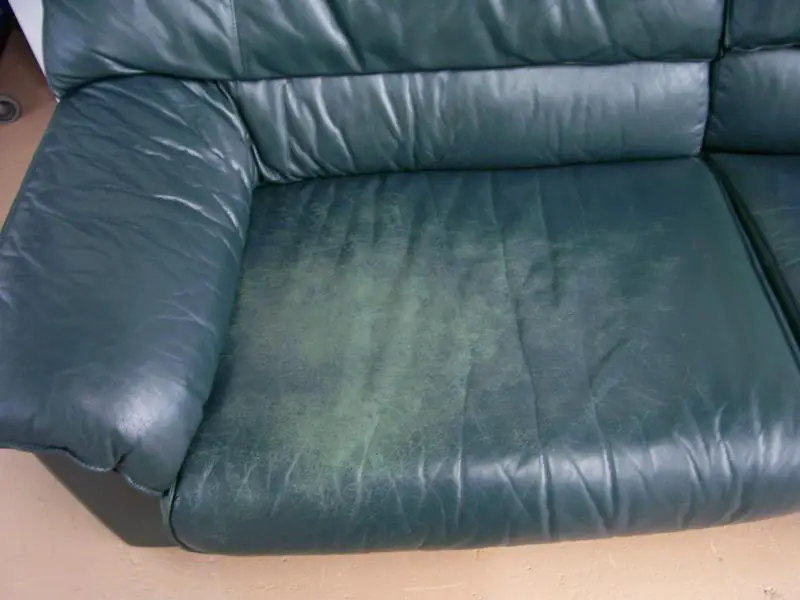
Luckily, you can restore dried leather with a few simple steps. The key is to clean the surface of your items, condition them regularly, and protect them from further damage.[2]
Clean Leather Regularly
Leather is a porous material that absorbs dirt and oils easily, so it’s important to clean it regularly. Use a soft cloth and warm water with a mild soap or cleaning product specifically designed for leather. Make sure to rinse off any residue thoroughly, and let the leather dry naturally before applying conditioner. Be careful not to saturate the leather, as this could cause further damage.[2]
Remove Scratches From Leather
The quickest solution for removing scratches from leather is to use a leather repair kit. These kits come with all the tools you need to remove scratches and restore your item back to its former glory.
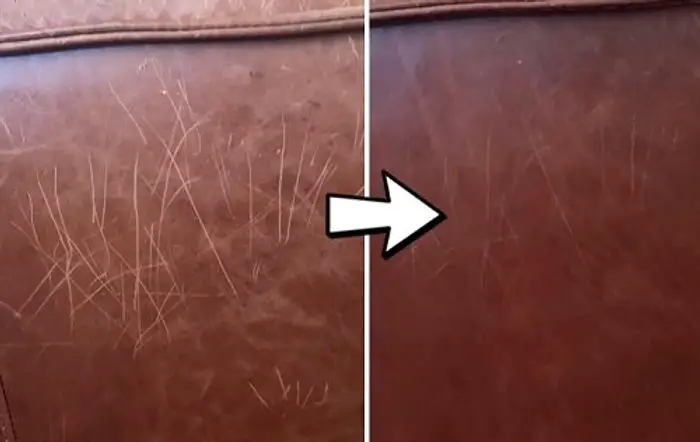
To begin, make sure the surface of the leather is clean and dry before applying any product. Use a soft cloth and warm soapy water if needed. Next, apply the leather repair compound supplied in the kit according to its instructions. You may need to use a leather paint brush or sponge provided with the kit to spread the compound over the affected area.
Allow it to dry completely and if necessary, buff lightly with a soft cloth.[2]
Restore Cracked Leather
If your dried leather item has started to crack, you may be wondering what can be done to restore it. The good news is that there are several ways you can repair cracked leather.[2]
Condition Your Leather
Once you’ve done the basic cleaning, it’s time to condition your leather. Conditioning the leather helps make sure that it stays soft and supple. The most important thing is to use a conditioner designed specifically for leather. You can find these in any shoe store or department store.
Before conditioning, make sure you test a small area of the leather first to make sure that it will not react badly. Then, apply a thin layer of the conditioner evenly across the surface and let it sit for 15 to 20 minutes.
Once the time is up, take a clean cloth and buff the leather until it shines. Do not over-condition your leather as this can lead to cracking or discoloration.
You should condition your leather at least twice a year to keep it looking and feeling its best. This is especially important if you live in an area with high humidity.[2]
Restore Faded Leather
Leather rejuvenation is possible if your leather has faded or become discolored. To bring back the natural beauty of your leather, it needs to be re-hydrated and nourished with a good quality leather conditioner.
Before you start any restoration project, ensure that all dust and dirt are cleaned from the surface of your item. You can use a soft cloth or brush to remove any debris.
Once you have cleaned the leather, it is time to hydrate it. You can do this by applying a leather conditioner that contains natural oils and waxes. Work the conditioner in with your hands or using a clean lint-free cloth, until its fully absorbed into the leather surface. This will help to restore the original color and softness of the leather.
Restore Water-Damaged Leather
Leather is a natural, durable material that will last for many years if treated properly. Unfortunately, water damage can cause leather to dry out and become brittle over time. Fortunately, there are some simple steps you can take to restore your leather items back to their original condition.
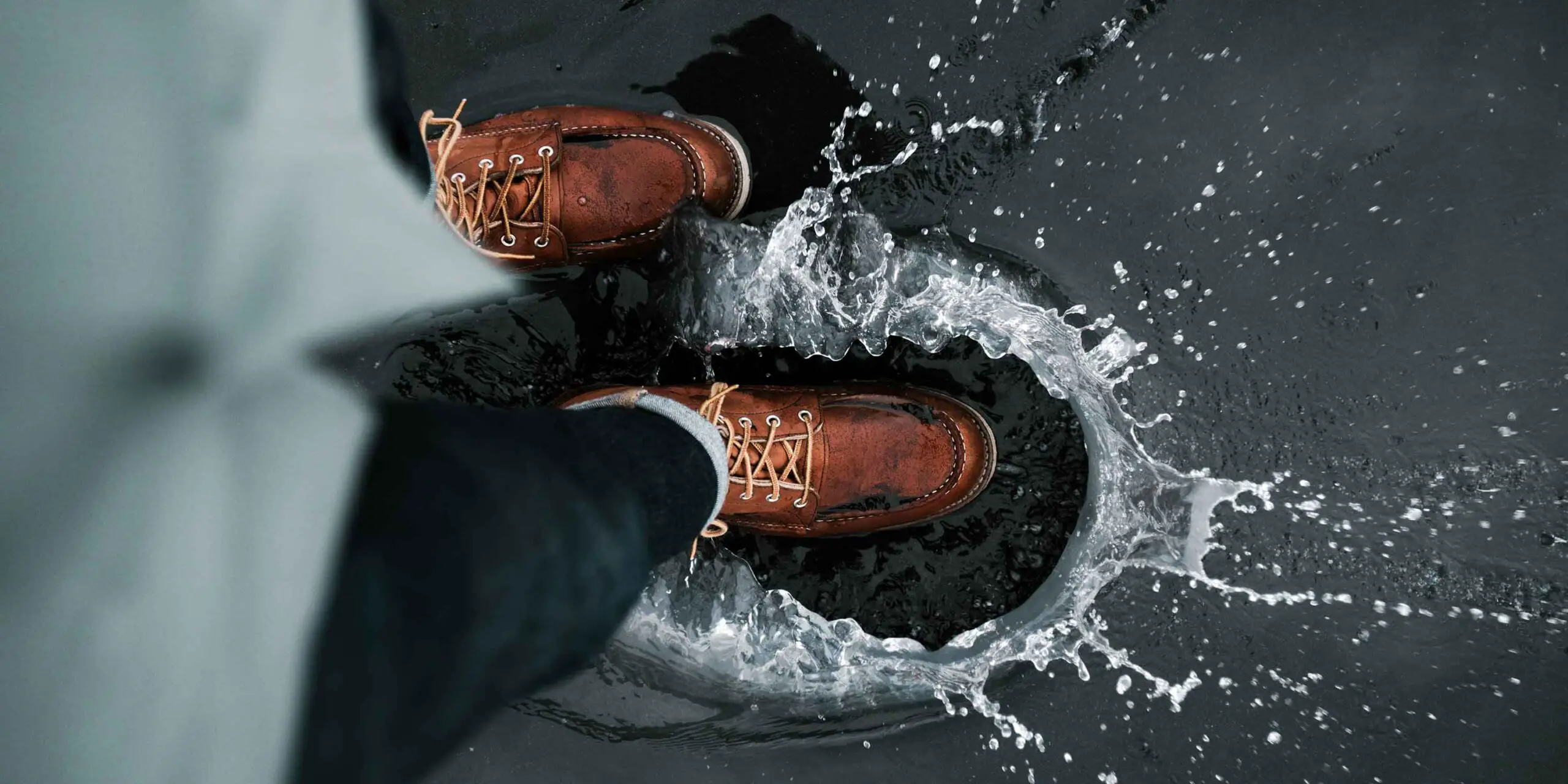
The first step in restoring water-damaged leather is to identify the source of the damage. If you know what caused the water, you can avoid future damage by making sure that area is protected from further exposure.
Once the source of the damage has been identified, it’s time to tackle the actual restoration process. Begin by washing the leather item with a mild soap and warm water, then dry it off with a soft cloth.[1]
Alcohol + Vaseline
Using a combination of alcohol and Vaseline can help restore dried leather. Start by wiping the leather down with a soft cloth dampened with rubbing alcohol. This will help to remove any dirt and oils that have built up on the surface of the leather.
Once it’s clean, use a soft cotton cloth to apply a thin layer of Vaseline onto the leather. Rub it in well so that the Vaseline is evenly distributed on the leather. The Vaseline will help to add a bit of moisture back into the dried leather and act as a protective barrier against future damage.
When you’re done, wipe away any excess with another soft cloth and let it sit for a few hours before using your item.[1]
Coconut Oil
Coconut oil is an all-natural moisturizer for dried leather. It nourishes the leather and helps to restore its suppleness. All you need to do is heat some coconut oil in a container, then rub it gently into the leather using a soft cloth. Coconut oil can also be used as a protective coating – just apply it after cleaning to prevent further drying of the leather. You can also add a few drops of essential oils to give the leather a pleasant smell. With regular application, you’ll soon see your leather items looking as good as new![1]
Conditioner
Conditioners are important for restoring dried leather. They help to lubricate and nourish the leather, making it soft and pliable again. When choosing a conditioner for your leather item, be sure to select one specifically designed for use on leather. Applying too much conditioner can leave residue or even cause discoloration of the leather.
Start by applying a small amount of conditioner to a clean, soft cloth and gently rubbing it into the leather in small circular motions. Wipe off any excess with a soft cloth before allowing the leather to dry completely.[1]
Mink Oil
Mink oil can be used to restore dried and cracked leather. It’s a natural product that works to soften, waterproof, and lubricate the leather. Before applying mink oil, make sure you clean your leather with a damp cloth.
When applying mink oil, liberally apply it to the surface using a soft cloth or brush. Work it into the leather and let it soak in for at least an hour. Once you’ve applied mink oil, buff it off with another soft cloth to remove any excess oil.
Mink oil works best on smooth leather surfaces, so if you want to restore a cracked or pebbled leather surface, you may need to try a different method.[1]
Leather Care Products
When restoring dried leather, you need to use special leather care products. Specialized cleaners and conditioners can help bring the leather back to life. The best way to find the right product is to read reviews online or ask an expert for advice on which product would be best for your particular item.
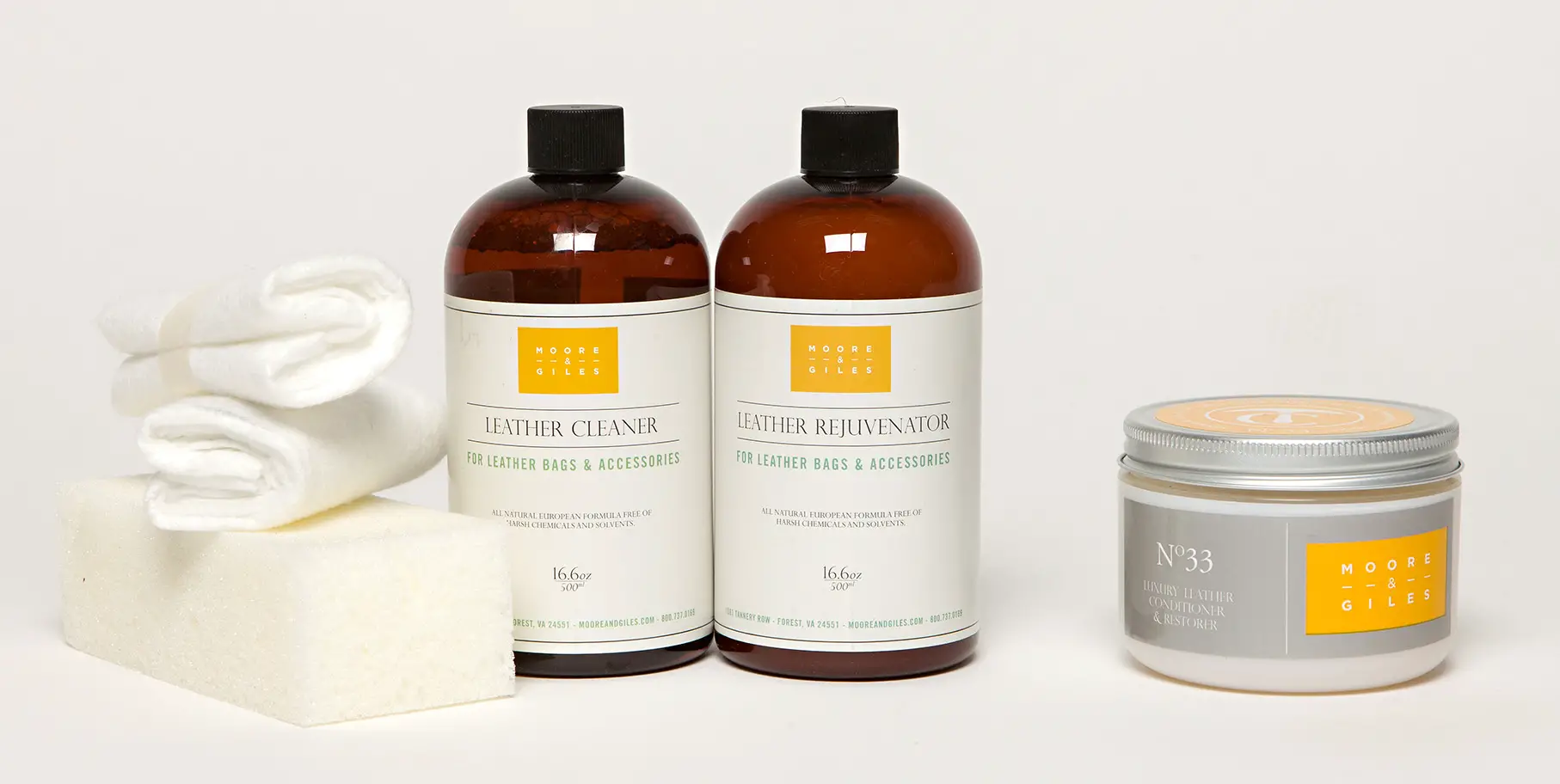
It’s important to only use products that are specifically designed for leather care. You should never use any form of household cleaner as this may make the problem worse and damage the leather further. Use a mild soap and water solution to clean minor dirt or debris off the leather before applying a specialized product.[1]
Softening with leather oil
Restoring dried leather is an easy process, and one of the most important ways to do it is by using leather oil. Leather oil helps to soften the leather fibers and bring back its suppleness and flexibility. You can use either a store-bought or homemade leather oil depending on your preference.
When applying the oil, make sure you use gentle strokes and apply a thin layer on the leather. Avoid using too much oil as this can potentially damage the leather. Allow the oil to penetrate into the leather fibers completely before wiping off any excess with a clean cloth.
You may need to repeat this process several times depending on how dry your leather is, but be sure not to overdo it.[3]
Moisturize leather with Beeswax
Beeswax is one of the best products to restore leather. It’s a natural way to add moisture back into leather, and it also helps to protect against dirt, scratches, and sun damage. You can buy beeswax in shoe stores or online. Apply the beeswax using a soft cloth and work it in circles until you’ve covered the surface of the leather. Allow it to sit for a few minutes and then buff away any excess with another cloth. This is best done on a regular basis to keep your leather looking great.[3]
Using vinegar to soften dry leather
If your leather has dried out and become stiff, you may be able to soften it up again with the help of vinegar. To do this, mix one part white vinegar with two parts linseed oil, then apply the mixture to the leather using a cloth or brush. Work it into the material and let it sit for several hours before buffing off any excess. If the leather isn’t too badly damaged, this method can restore some of its suppleness.[3]
FAQ
Can very dry leather be restored?
Yes, it is possible to restore very dry leather. The best method for restoring dried leather is to condition it with a good quality leather conditioner. The conditioner will help bring back the natural oils in the leather and make it softer and more supple. It is important to use the correct type of conditioner, as some may contain ingredients that could damage or discolor the leather.
How do you revive damaged leather?
Damaged leather can be revived by cleaning it with a leather cleaner and then conditioning it with a good quality leather conditioner. After the leather has been cleaned, use a soft cloth to apply the conditioner and then allow it to dry. Once the leather is fully dried, use a good quality wax or polish to bring back the shine and protect the surface of the leather.
Will Vaseline work to rehydrate leather?
Vaseline can be used to rehydrate leather, however it should not be used as a substitute for conditioner. Vaseline can help soften leather, but does not contain the same essential oils found in leather conditioners so cannot replace them in restoring dried leather.
What oil to revive leather?
The best oil to use to revive leather is a good quality leather conditioner. Leather conditioners contain natural oils and other ingredients specifically designed to help restore dry, cracked or stiff leather. These conditioners should be applied with a soft cloth in order for them to penetrate the leather evenly. After applying the conditioner, let it sit for several minutes before wiping off any excess. This will help ensure the leather is moisturized and protected.
How can I moisturize leather?
The best way to moisturize leather is with a good quality leather conditioner. The conditioner will help restore the natural oils and bring back the softness of the leather. It is important to apply the conditioner evenly using a soft cloth, allowing it to penetrate into the leather before wiping off any excess. After you have conditioned your leather, use a wax or polish to protect the surface of the leather and bring back a shine.
Can you use olive oil on leather?
Olive oil can be used on leather, but it should not be used as a substitute for conditioner. Olive oil may help soften the leather and make it more pliable, however it is not formulated to restore essential oils or protect the leather in the same way as conditioners designed specifically for leather. For best results, use a good quality conditioner when restoring.
Does coconut oil hydrate leather?
Coconut oil can be used to hydrate leather, but it should not be used as a substitute for conditioner. Coconut oil may help soften the leather and make it more pliable, however it is not formulated to restore essential oils or protect the leather in the same way as conditioners designed specifically for leather. For best results, use a good quality condition.
How do you nourish leather naturally?
The best way to nourish leather naturally is with a good quality leather conditioner. Leather conditioners contain natural oils that will help restore the softness and suppleness of the leather. It is important to apply the conditioner evenly using a soft cloth, allowing it to penetrate into the leather before wiping off any excess. After you have conditioned your leather, use a wax or polish to protect the surface of the leather and bring back a shine.
Useful Video: How to Restore Leather Goods Pt 1
Conclusion
Leather is a delicate material that requires special attention when cleaning and restoring. When leather becomes dried out, it can become brittle and crack if not properly cared for. Fortunately, there are several steps you can take to restore your dried leather products back to their original condition. Cleaning and conditioning the leather on a regular basis is the best way to maintain its softness and suppleness.
If your leather item has become cracked or dried out, you should first try to clean it with warm water, then condition it to keep it soft and pliable. Applying a leather protector will help protect the material from dirt and oil build-up and prevent further drying out.
Finally, never leave your leather product in direct sunlight as this can contribute to drying and cracking. With proper care and maintenance, you can ensure your leather products stay looking their best for years to come.
References
- https://olpr.com/blogs/articles/how-to-soften-leather-the-right-way
- https://www.leatherhoney.com/blogs/leather-care/six-leather-restoration-tips
- https://leatherinsights.com/how-to-restore-dry-leather/

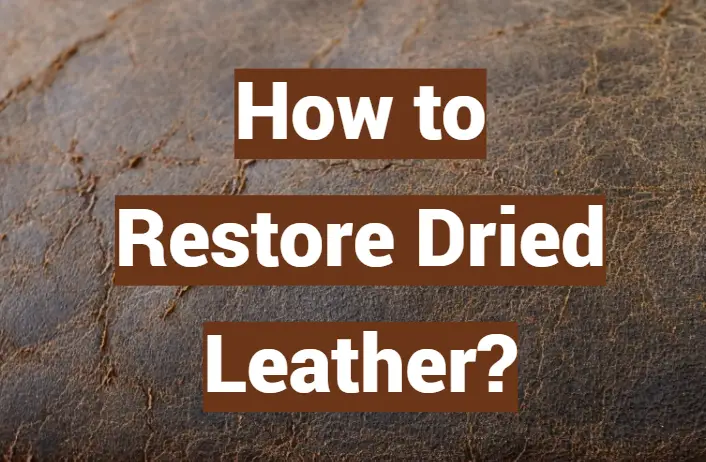

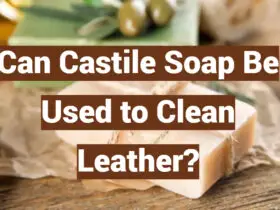
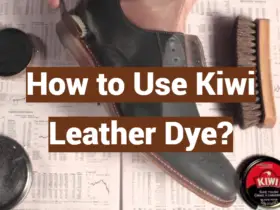
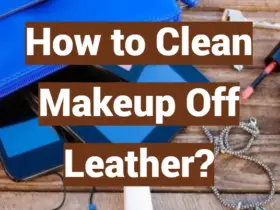

Leave a Reply